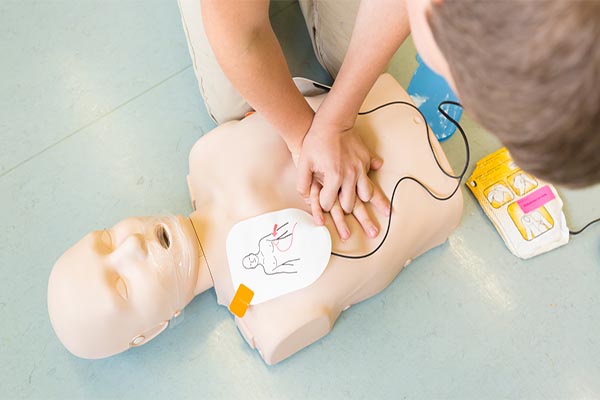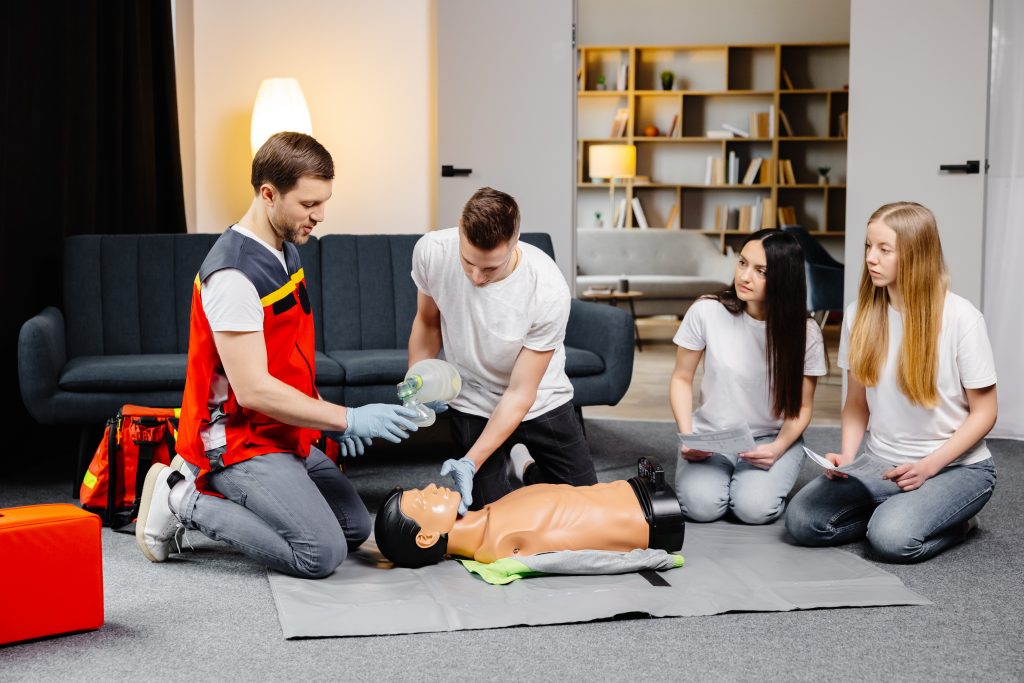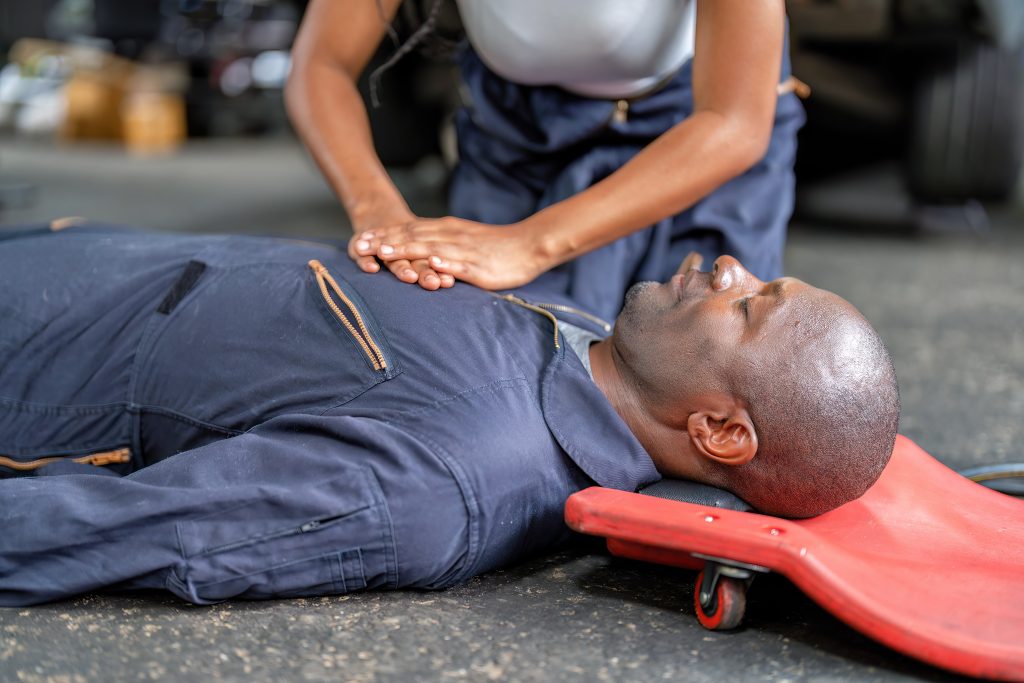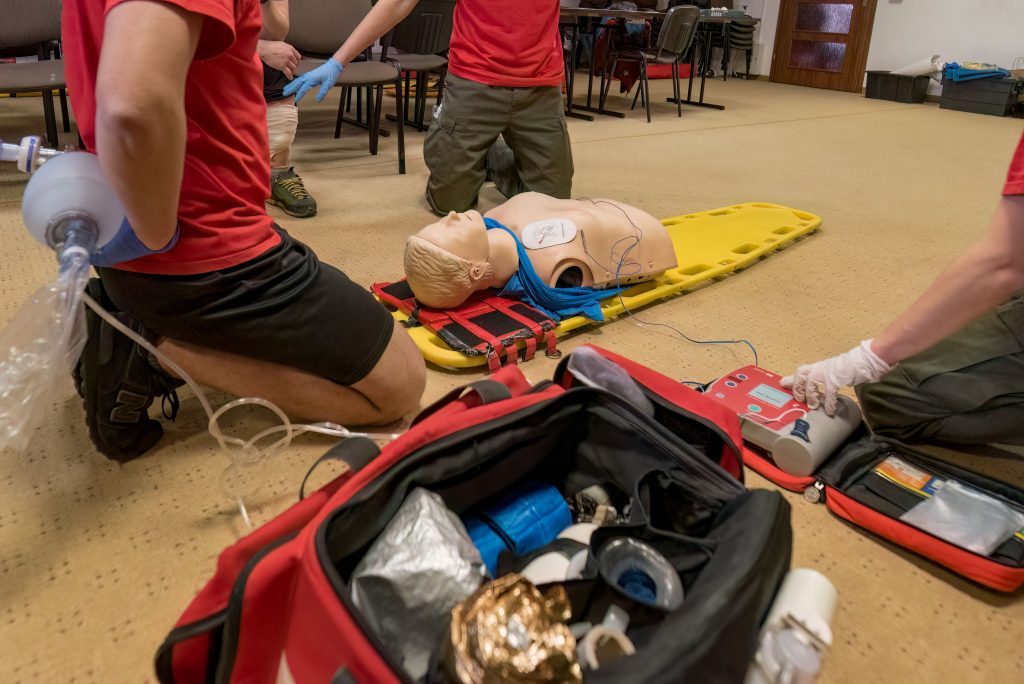Top 5 Reasons Raleigh Residents Need CPR Certification

Raleigh, North Carolina, is widely celebrated as one of the best places to live and work in the nation. This vibrant city, part of the thriving Wake County, boasts beautiful parks, booming businesses, and world-class healthcare systems. Yet, even in the safest and most advanced communities, emergency health crises can strike without warning.
When a sudden medical emergency occurs, such as a cardiac arrest or severe choking incident, every single second counts. The time it takes for professional Emergency Medical Services (EMS) to arrive is often too long for a victim to survive without intervention. This is why the power to save a life rests not just with paramedics and doctors, but with you, the everyday resident.
Obtaining your CPR certification is not just a resume booster or a box to check for work. It is an investment in your neighbors, your family, and your community’s overall health and resilience. For Raleigh residents, becoming CPR certified is particularly critical. This comprehensive guide will explore the top five compelling reasons why now is the perfect time to enroll in an American Heart Association (AHA) certified CPR class.
We will delve into the local statistics that prove the necessity of bystander intervention. We will also examine how your certification supports Wake County’s esteemed public safety efforts. Finally, we will outline how this essential skill can protect your professional future and the most vulnerable people in your life, your children and infants. By the end, you will understand that getting certified is one of the most proactive steps you can take for your Raleigh life.
The decision to become certified puts you at the ready. It transforms you from a bystander into a lifesaver. It equips you with the confidence and practical skills necessary to perform Cardiopulmonary Resuscitation (CPR) and use an Automated External Defibrillator (AED). These are the first, most crucial links in the “Chain of Survival.” Don’t wait for an emergency to realize you wish you had these skills.
1. Why Do Most Cardiac Arrests Happen Where EMS Cannot Immediately Reach?
The vast majority of sudden medical emergencies do not happen in hospitals or public squares. They occur in the intimate, quiet setting of a private residence.
Factual data confirms this overwhelming trend.
Where is the most likely location for a cardiac event?
Approximately 71% of all Out-of-Hospital Cardiac Arrests (OHCA) take place within the victim’s home or residence. This is a critical factor for every Raleigh homeowner and renter to consider. When a loved one collapses in their own home, EMS is not standing by instantly.
- You are the undisputed first responder in this scenario.
- A spouse, partner, child, or grandparent relies on the immediate presence of a trained individual.
- The victim’s survival hinges on someone present initiating CPR immediately.
The average EMS response time in North Carolina, even in urban areas like Raleigh, can be several minutes. When the heart stops, brain death can begin in as little as four to six minutes.

What is the survival difference between immediate and delayed intervention?
The gap between life and death is often measured in these few minutes, and the difference is startling. Survival rates for OHCA are drastically higher when a bystander begins CPR immediately.
For instance, data shows that receiving bystander CPR results in significantly improved survival outcomes compared to those who do not receive immediate help. This underscores the power of widespread community training. Even if you are not a medical professional, your swift action keeps blood and oxygen flowing. This bridges the critical time gap until professional help arrives.
When you become certified, you learn to:
- Recognize the signs of sudden cardiac arrest.
- Call 911 immediately to activate professional help.
- Perform high-quality chest compressions and rescue breaths to maintain vital functions.
- Utilize an AED if one is available nearby.
Your home is your sanctuary, and certifying in CPR turns it into the safest possible environment for your entire household.
2. How Does My Certification Directly Boost Wake County’s High Save Rate?
Wake County, which encompasses Raleigh, is recognized nationally for its excellence in emergency medical services. Wake County EMS has successfully cultivated one of the highest cardiac arrest survival programs in the entire country.
This success is not achieved through technology alone. It is a system built on robust training, speedy response, and effective community partnership, which includes you.
What is the “Chain of Survival” and what is the public’s role?
The American Heart Association (AHA) defines the Chain of Survival as a series of critical actions that maximize the chance of survival for a victim of cardiac arrest. The links include:
- Recognition and Activation: Recognizing the emergency and calling 911.
- Immediate High-Quality CPR: Performed by a bystander (you).
- Rapid Defibrillation: Applying an AED, often by a bystander or first responder.
- Advanced Resuscitation: Provided by EMS and hospital staff.
- Post-Cardiac Arrest Care: Treatment received in the hospital.
Why is the bystander link the most vulnerable?
While Wake County EMS shines in its response metrics, the community still struggles with consistent bystander intervention rates.
While EMS is fast, even the shortest response time still requires minutes to reach the scene. The immediate CPR performed by a trained citizen is the second and arguably most vital link in the entire chain.
- A trained citizen cuts the time to intervention from minutes down to seconds.
- Every minute of delay in defibrillation decreases a victim’s chance of survival by approximately 10%.
- When Raleigh residents step up to learn CPR, they collectively reduce this fatal delay.
By obtaining your AHA BLS certification, you are actively participating in and strengthening a public health effort that is nationally celebrated. You are helping Wake County uphold its reputation for saving lives. You are ensuring that when professional help arrives, they are greeted by a victim who has a fighting chance because essential life support was already initiated. Your certification becomes a measurable contribution to the public safety success of the entire Raleigh metropolitan area.
3. Is CPR Certification a True Requirement for Career Advancement in Raleigh?
For many Raleigh residents, CPR certification is not merely a beneficial skill; it is a non-negotiable professional requirement. The broad, diverse economy of the Raleigh-Durham area, especially its healthcare, education, and construction sectors, demands certified personnel.
The gold standard for employers across the country is the American Heart Association (AHA) Basic Life Support (BLS) certification. This is the certification offered by CPR Classes Near Me Raleigh.
Which Raleigh professions typically require AHA BLS certification?
The list of careers that mandate or highly prefer BLS certification spans far beyond traditional hospital settings. If your job involves public interaction, physical activity, or duty of care, this certification is essential.
Required or preferred professionals include:
- Healthcare Workers: Nurses (RNs, LPNs), Certified Nursing Assistants (CNAs), Medical Office Personnel, Physical Therapists, Dentists, and Clinical Staff.
- Education and Childcare: Teachers, School Administrators, Daycare Providers, and Nannies.
- Fitness and Recreation: Personal Trainers, Coaches, Sports Referees, Swim Instructors, and Lifeguards.
- Industrial and Service Roles: Construction Workers, Electricians, Flight Attendants, and Hospitality Staff.
How does OSHA compliance affect local Raleigh businesses?
The Occupational Safety and Health Administration (OSHA) sets strict guidelines for businesses in North Carolina concerning workplace safety. These rules make CPR certification a necessity for any Raleigh business where life-threatening hazards exist.
According to OSHA interpretation, if a workplace has hazards that could cause serious injuries (like falls, suffocation, electrocution, or amputation), emergency medical services (EMS) must be available within 3 to 4 minutes.
If your business cannot guarantee EMS arrival in that tight timeframe, the employer must ensure that employees are trained and available to provide first aid and CPR immediately. Common severe workplace injuries that require immediate CPR often include:
- Electrical Burns: Can instantly disrupt heart rhythm and cause cardiac arrest.
- Falls from Heights: Can cause trauma leading to stopped breathing or cardiac arrest.
- Exposure to Chemicals: Can lead to respiratory distress or unconsciousness.
By getting certified, you increase your job marketability and simultaneously help your Raleigh employer meet vital safety and legal compliance requirements. This makes you an indispensable asset in any professional environment.
4. Why is Proficiency in Infant and Child CPR Particularly Important for Raleigh Families?
Raleigh is a city full of young, growing families, making proficiency in pediatric life support techniques a crucial skill. Accidental injuries, choking, and sudden illness are tragically common in children and infants.
An AHA-certified BLS course, such as those offered by CPR Classes Near Me Raleigh, is designed to provide comprehensive training across all age groups. This specialized knowledge is what makes your certification truly valuable within a community of families.
Are pediatric emergencies different from adult emergencies?
Yes, they are fundamentally different, and the training must reflect this. While adult cardiac arrest is often related to pre-existing heart conditions, pediatric cardiac emergencies are more frequently caused by respiratory failure (choking, severe asthma, drowning) or trauma.
This distinction requires specialized knowledge that is covered extensively in a comprehensive CPR course:
- Infant Technique: Specific hand placement (two fingers), shallower chest compression depth, and different rescue breathing techniques are required due to an infant’s size and fragility.
- Child Technique: Use of one or two hands for compressions and a modified ratio for breaths and compressions are taught for children between ages one and eight.
- Choking Scenarios: You will learn age-appropriate maneuvers for clearing an obstructed airway in a conscious or unconscious victim, whether they are an adult, child, or infant.
How does this training protect children in public and private settings?
A parent or caretaker who is certified is immediately ready for the most stressful situations involving a child.
- At Home: An infant choking on a small toy or a child suffering a severe allergic reaction.
- In Public: A child drowning at a pool in Cary or a youth athlete collapsing on the field in Raleigh.
The training equips you to handle the terrifying moment when a child stops breathing. Furthermore, this knowledge is paramount for anyone involved in youth activities, including:
- School teachers and coaches.
- Babysitters and nannies.
- Gymnastics or dance instructors.
When dealing with a pediatric emergency, there is absolutely no time for hesitation. The specific, hands-on training you receive ensures you can act with confidence and precision to give the child the highest chance of survival.

5. Is CPR a Skill That Provides Lifelong Community and Personal Value?
Unlike fleeting trends or software knowledge that quickly become obsolete, the ability to perform life support is a timeless skill. Once you master the fundamentals of CPR and AED use, that knowledge remains part of your core competency.
Your certification, which is valid for two years, serves as a regular reminder and opportunity to refresh the skills that could save a life at any moment.
How does certification offer practical skills beyond cardiac arrest?
The lessons learned in an AHA BLS course are applicable to a wide array of accidents and sudden emergencies that are common in any active city like Raleigh.
The training provides foundational knowledge for responding to incidents such as:
- Choking: This is a daily risk in any home or restaurant. Quick action is essential to clear the airway.
- Drowning: This risk is present around pools, lakes, and even bathtubs. CPR is often the immediate intervention required to expel water and restart breathing.
- Severe Trauma: Accidents on Raleigh roads or construction sites can cause victims to lose consciousness and stop breathing. CPR skills apply here as well.
- Sudden Illness: Strokes or severe allergic reactions (anaphylaxis) can lead to respiratory or cardiac failure. Your training teaches you to manage the victim until EMS arrives.
By enrolling in a class, you receive more than just a card. You gain comprehensive life skills that translate into confidence during chaos.
What is the advantage of hands-on, in-person training?
While online resources exist, the American Heart Association (AHA) and most employers agree that effective CPR requires in-person, hands-on training.
CPR Classes Near Me Raleigh provides a dynamic, relaxed environment where certified instructors ensure you develop muscle memory.
- Hands-on Practice: You practice chest compressions and rescue breaths on professional manikins, ensuring correct depth and rate.
- Instructor Feedback: Local, certified trainers provide immediate, constructive feedback, a necessity for mastering this physical skill.
- Scenario Training: You work through realistic emergency scenarios (choking, AED use) to build the confidence required to act decisively in a real-life crisis.
This comprehensive, yet concise, training takes approximately 3.7 hours and culminates in receiving your official, universally accepted AHA eCard on the same day you pass the class. This makes the path to becoming a certified lifesaver in Raleigh efficient and highly effective.
Conclusion: Take Action for Raleigh’s Future
The need for widespread CPR certification in Raleigh is clear and multifaceted. It is a necessity rooted in the following key areas:
- Family and Home Safety: Protecting the 70%+ of cardiac arrest victims who collapse in private residences.
- Community Resilience: Strengthening Wake County’s esteemed Chain of Survival by ensuring rapid bystander intervention.
- Professional Requirement: Meeting the mandatory BLS standards for key industries across the Research Triangle area.
- Pediatric Protection: Equipping parents and caretakers with the specialized skills needed to save infants and children.
- Lifelong Preparedness: Gaining a timeless skill applicable to various trauma and choking scenarios.
Every certified person in Raleigh is a protective layer for the community. You have the ability to make a life-or-death difference.
Don’t be a hopeful bystander; be a capable lifesaver.
Ready to take the step to secure your certification today?
Contact CPR Classes Near Me Raleigh to enroll in the most trusted and employer-accepted American Heart Association (AHA) BLS, CPR/AED, and First Aid courses. Receive your official eCard the same day you train!
FAQ Section: Your Certification Questions Answered
How long does a CPR certification from CPR Classes Near Me Raleigh last?
Your American Heart Association (AHA) BLS CPR Certification, obtained through CPR Classes Near Me Raleigh, is valid for a period of two full years from the date of successful course completion. Because the AHA regularly updates its guidelines based on the latest science, a renewal course is required every two years to ensure your skills remain current and effective.
What is the difference between AHA BLS and a basic CPR class?
AHA BLS (Basic Life Support) is the highest standard of non-professional, entry-level certification, making it the most recognized and employer-accepted credential nationwide. It is specifically designed for both the general public and healthcare providers, covering advanced topics such as team-based resuscitation and the proper use of an Automated External Defibrillator (AED). A basic CPR class often covers only adult CPR and may not include the comprehensive training or official AHA credentials required by most professional employers in Raleigh.
Can I renew my CPR certification through CPR Classes Near Me Raleigh?
Yes, absolutely. To renew your certification for an additional two years, you can simply enroll in any Raleigh BLS CPR course offered by CPR Classes Near Me Raleigh. The renewal process is typically the same as the initial in-person BLS course, ensuring you get the essential hands-on practice needed to refresh your life-saving techniques and receive your updated eCard promptly.
How long does the in-person class take to complete?
The required hands-on, in-person American Heart Association (AHA) BLS training course takes approximately 3.7 hours to complete. This includes video instruction, direct interaction with a certified local instructor, and the mandatory hands-on practice and testing segments. CPR Classes Near Me Raleigh prides itself on its efficient process, ensuring you receive your official AHA BLS certification eCard on the very same day you finish the class.
Does CPR Classes Near Me Raleigh offer training for infants and children?
Yes. The American Heart Association BLS CPR and AED certification class offered by CPR Classes Near Me Raleigh provides comprehensive training that covers life-saving techniques for Adults, Children, and Infants. This ensures that you are prepared for a cardiac or choking emergency regardless of the victim’s age, which is essential for parents, teachers, and childcare professionals in the Raleigh community.



